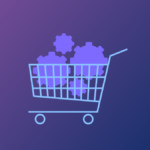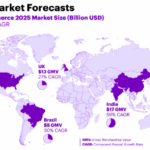🧾 What’s New?
According to a recent Research & Markets forecast, the global third-party logistics (3PL) market is expected to grow from $1.1 trillion in 2024 to an estimated $1.9 trillion by 2030, driven primarily by the rapid expansion of e‑commerce and the adoption of omni-channel fulfillment strategies.
📦 What’s Driving the Surge?
The growth is fueled by increasing demand for:
- Warehousing & Fulfillment Services
- Last-Mile Delivery Optimization
- Returns Management
- Real-Time Tracking & Logistics Tech Integration
E-commerce giants and scaling D2C brands are outsourcing logistics more than ever, focusing on speed, scalability, and operational efficiency across markets like the United States, China, and Europe.
🌍 Why It Matters
“The modern shopper expects next-day delivery and real-time tracking. That expectation has made 3PL partners not just helpful—but essential.” — DMSMatrix Logistics Insight Team
The complexity of global e-commerce now requires more integrated logistics ecosystems, where 3PLs act as strategic growth enablers, not just carriers.
📊 Market Breakdown by Function
| 3PL Segment | Growth Driver |
|---|---|
| Transportation | Parcel delivery, route optimization, real-time ETA visibility |
| Warehousing | Demand for urban micro-fulfillment centers and dark stores |
| Returns & Reverse Logistics | Increasing focus on cost-effective, tech-enabled return flows |
| IT Services | Need for API-based integrations, inventory tracking, and predictive analytics |
🧠 Strategic Implications for Sellers
- Faster Scaling: Using 3PL partners reduces CAPEX and speeds up international expansion
- Cost Efficiency: Outsourcing logistics saves on labor, real estate, and fleet costs
- Tech + Data: 3PLs now offer integrated tech stacks with dashboards, alerts, and inventory syncing









